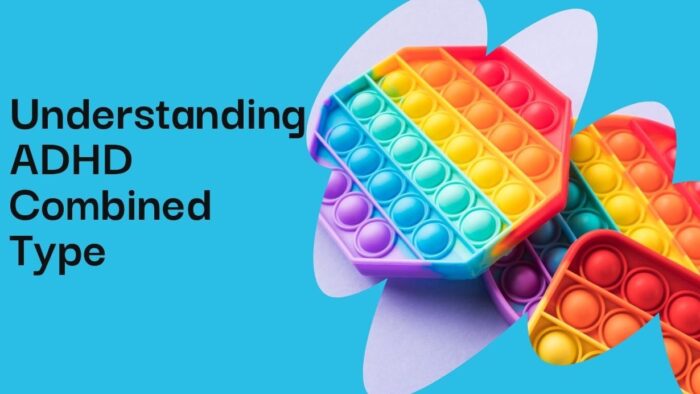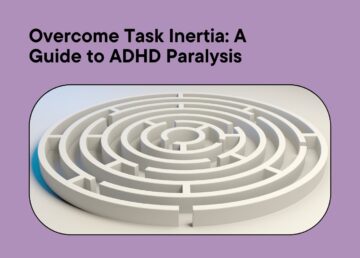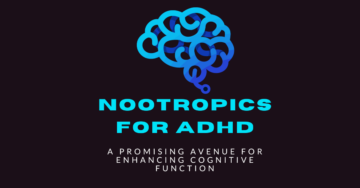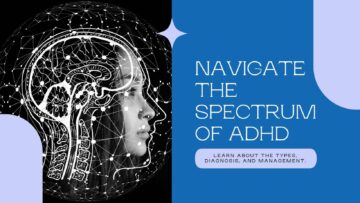
Attention-deficit hyperactivity disorder (ADHD) is a neurodevelopmental disorder characterised by persistent patterns of inattention, hyperactivity, and impulsivity that interfere with daily functioning and development of individuals life. Affecting millions of people worldwide, ADHD manifests in three distinct presentations: predominantly inattentive, predominantly hyperactive-impulsive, and the combined type. Among these, ADHD combined type presents the most unique challenges as it blends inattentive and hyperactive-impulsive symptoms of ADHD.
To fully understand ADHD combined type, it is important to first understand the broader concept of ADHD. ADHD is rooted in differences in the brain structure and how it function, affecting the brain’s ability to regulate attention, executive functioning, and impulse control. These differences manifest in a range of symptoms that can significantly impact daily life by affecting academic performance, work productivity, and relationships. It is estimated that approximately 8.4% of children and 2.5% of adults in United States have ADHD.
Within the spectrum of ADHD, three main presentations have been identified:
Predominantly Inattentive Presentation: Characterised by persistent patterns of inattention, difficulty focusing, and forgetfulness, individuals with this presentation may appear withdrawn or daydreamy.
Predominantly Hyperactive-Impulsive Presentation: Marked by excessive restlessness, fidgeting, and difficulty remaining still, individuals with this presentation may appear impulsive, blurting out answers, having trouble waiting for their turn or engaging in risky behaviors.
Combined Type Presentation: As the name suggests, ADHD combined type encompasses symptoms of both inattention and hyperactivity-impulsivity. Individuals with this presentation exhibit a mix of difficulty focusing, excessive activity, and/or impulsive behavior.
Among the three presentations, ADHD combined type is the most common one, affecting approximately 70% of individuals affected with ADHD. ADHD combined type is characterized by a persistent pattern of six or more symptoms of inattention and six or more symptoms of hyperactivity-impulsivity, occurring for at least six months to a degree that is inconsistent with developmental level and interferes with daily functioning.

The impact of ADHD combined type on individual is multifaceted. Academic performance may suffer due to difficulties with focus and organization. Work productivity may be hindered by challenges with time management, task completion, and impulse control. Relationships may experience strain due to communication issues, impulsiveness, and emotional reactivity. Understanding ADHD combined type requires delving into the specific symptoms that characterize this presentation.
What are the symptoms and signs of ADHD combined type?
As previously stated, ADHD combined type is characterised by a persistent pattern of 6 or more symptoms of inattentive and 6 or more symptoms of hyperactive ADHD types, thus in order to fully understand it, it is essential to understand the underlying symptoms characteristic of the other two ADHD types.
Inattentive Symptoms: Struggles with Focus and Organization
Inattention, a core feature of ADHD combined type, manifests in various ways that disrupt daily functioning. Inattentive ADHD type is most often characterised by:
- Difficulty Paying Attention: Engaging in tasks or conversations requires significant effort, as attention easily wanders or drifts away.
- Being Easily Distracted: Even the slightest external stimuli, such as sounds or sights, can disrupt focus and divert attention.
- Forgetfulness: Misplacing items, forgetting appointments, and struggling to remember details are common occurrences in daily life.
- Difficulty Following Instructions: Multi-step tasks or complex instructions can be overwhelming, leading to confusion, errors or inability to finish tasks.
- Difficulty Organizing and Managing Tasks: Planning, prioritizing, and time management become challenging, leading to procrastination and disorganization.
- Appearing Daydreamy or Disengaged: Individuals affected by inattentive type may seem lost in their thoughts, withdrawn, or uninterested in their surroundings.
- Difficulty Finishing Tasks: Tasks are often abandoned incomplete either due to loss of focus and distractions, or due to difficulty staying on track.
Hyperactive-Impulsive Symptoms: Challenges with Restlessness and Impulsivity
Hyperactivity and impulsivity, the other hallmark of ADHD combined type, manifest in a range of behaviors that interfere with daily functioning. Individuals with ADHD hyperactive-impulsive presentation often exhibit:
- Excessive Restlessness: Difficulty remaining still, fidgeting, and squirming are some of the most common signs of hyperactive-impulsive ADHD type.
- Hyperactivity: Excessive motor activity, characterized by running, climbing, or excessive movement, is also often observed in relation to this ADHD type.
- Difficulty Remaining Seated: Sitting still is challenging, leading to fidgeting, squirming, or getting up frequently.
- Blurting Out Answers: Responding impulsively without waiting for a complete question or without considering the consequences.
- Difficulty Waiting in Line: Impatience and impulsivity can lead to frustration and rule-breaking when waiting in lines or in other situations where waiting is required.
- Acting Without Thinking: Engaging in actions without considering the potential consequences or risks is also a commonly observed characteristic of this type of ADHD.
- Interrupting Conversations: Interrupting others’ conversations or monopolizing discussions due to impulsivity.
ADHD combined type – the interplay of inattentive and hyperactive-impulsive symptoms
In ADHD combined type, inattentive and hyperactive-impulsive symptoms coexist and interact, creating a unique set of challenges. For example, difficulty focusing can lead to impulsive behavior as individuals seek to stimulate themselves and cope with boredom. Conversely, hyperactivity can make it even more difficult to maintain attention and focus. Understanding the interplay of these symptoms is essential for effective diagnosis, treatment, and support. By addressing both inattention and hyperactivity-impulsivity, individuals with ADHD combined type can develop strategies to manage their symptoms, improve their daily functioning, and achieve their full potential.

What causes ADHD and what increases your risk of combined type ADHD?
Although the exact factors which cause ADHD are not fully clear, it is believed that ADHD is caused by interplay between genetic and environmental factors.
It has been proven that genetic factors play a significant role in ADHD susceptibility. Studies have shown that ADHD runs in families, with children of affected parents having a significantly higher risk of developing the disorder. Researchers have identified several genes that are associated with an increased risk of ADHD, suggesting that genetic variations contribute to differences in brain structure and function that underlie ADHD.
Environmental factors also contribute to the ADHD development, interacting with genetic predispositions to influence the severity and presentation of symptoms. These factors may include:
- Prenatal Exposures: Exposure to certain substances during pregnancy, such as alcohol, tobacco, and lead, has been associated with an increased risk of ADHD.
- Early Childhood Experiences: Negative early childhood experiences, such as neglect, abuse, or instability, can impact brain development and increase the risk of ADHD.
- Brain Injuries: Head trauma or other brain injuries can alter brain structure and function, potentially contributing to ADHD symptoms.
In regards to combined type ADHD, while the specific factors that increase the risk of ADHD combined type are not fully understood, some potential contributors include:
- Family History of ADHD: Having a family member with ADHD combined type increases the likelihood of developing the same presentation.
- Early Onset of Symptoms: Individuals who exhibit ADHD symptoms before the age of five are more likely to develop combined type ADHD.
- Severity of Symptoms: More severe ADHD symptoms, particularly those related to both inattention and hyperactivity-impulsivity, may increase the risk of combined type ADHD.
- Comorbid Conditions: The presence of other mental health conditions, such as anxiety or learning disabilities, may increase the likelihood of combined type ADHD.

How is ADHD combined type diagnosed ?
Accurately diagnosing combined type ADHD is crucial to ensure the individuals receive appropriate treatment and support. The diagnostic process involves a thorough assessment of symptoms, developmental history, and current functioning. While the general principles of diagnosing ADHD combined type remain consistent, the specific approach may vary depending on the age of the individual being evaluated as the process somewhat differs between children and adults. In general the diagnosis of combined type ADHD is based on the criteria outlined in the Diagnostic and Statistical Manual of Mental Disorders (DSM-5). These criteria include:
- Persistent Inattention Symptoms: Six or more symptoms of inattention must be present for at least six months to a degree that is inconsistent with developmental level and interferes with daily functioning.
- Persistent Hyperactivity-Impulsivity Symptoms: Six or more symptoms of hyperactivity-impulsivity must be present for at least six months to a degree that is inconsistent with developmental level and interferes with daily functioning.
- Symptom Severity: The symptoms must cause significant impairment in social, academic, or occupational functioning.
- Symptom Onset: Symptoms must have been present before the age of 12 years old.
- Symptom Exclusion: Symptoms cannot be better explained by other conditions, such as anxiety, depression
Diagnosis of Combined Type ADHD in Children
For children, the diagnostic process typically begins with a consultation with a paediatrician or child psychiatrist. The healthcare provider will gather detailed information about the child’s symptoms, including their onset, severity, and impact on daily life. They will also review the child’s developmental history, medical history, and family history of ADHD or other mental health conditions.
In addition to clinical interviews, standardized rating scales and behavioral checklists may be used to assess the child’s symptoms. These tools provide a more objective and quantifiable measure of the child’s inattention and hyperactivity-impulsivity.

Diagnosis of ADHD Combined Type in Adults
Diagnosing ADHD combined type in adults can be more challenging than in children due to the potential for symptoms to manifest differently than in childhood. Adults may have developed coping mechanisms to manage their symptoms, making them less apparent. Additionally, ADHD symptoms in adults may overlap with symptoms of other mental health conditions, such as anxiety or depression.
The diagnostic process for adults with suspected ADHD combined type typically involves a comprehensive evaluation conducted by a psychiatrist, psychologist, or mental health professional. Similar to the approach for children, the evaluation includes a thorough clinical interview to gather detailed information about the individual’s symptom history, developmental history, medical history, and family history. A standardised rating scales and behavioural checklists may also be used to assess the individual’s symptoms. There are some differences between how it manifests and is being diagnosed between women and men.
Treatment for Combined Type ADHD
The treatment approach for ADHD combined type typically involves a combination of medication and non-drug management strategies. The specific treatment plans are based on the individual’s age, symptom severity, co-existing conditions, and personal preferences.

Medication for ADHD Combined Type
Medications plays a crucial role in managing combined type ADHD symptoms. The two main classes of medications used for ADHD are stimulant and non-stimulant medications.
- Stimulant Medications: Stimulant medications, such as methylphenidate (Ritalin, Concerta) and amphetamine (Adderall, Dexedrine), are the most commonly prescribed medications for ADHD combined type. They work by increasing the levels of dopamine and norepinephrine in the brain, which helps to improve focus, attention, and impulse control.
- Non-Stimulant Medications: Non-stimulant medications, such as atomoxetine (Strattera) and guanfacine (Intuniv), are an alternative option for individuals who do not respond well to stimulants or have side effects from them. They work by affecting different neurotransmitter systems in the brain, helping to improve attention and impulsivity.
Non-Drug Management Strategies
In addition to medication, a variety of non-drug management strategies can be effective in managing ADHD symptoms. These strategies include:
- Behavioral Therapy: Behavioral therapy, such as cognitive-behavioral therapy (CBT), can help individuals with ADHD combined type develop strategies for managing their symptoms, improve their self-regulation, and enhance their overall functioning. There are numerous apps available which can potentially help with this.
- Parent Training: When ADHD is affecting children, parent training programs can provide parents of children with ADHD combined type with the knowledge and skills to effectively manage their child’s behavior and support their academic and social success.
- Psychoeducation: Can provides individuals with ADHD combined type and their families with information about the disorder, its causes, and treatment options. This knowledge can help to reduce stigma, promote understanding, and facilitate effective management of the disorder.
- Lifestyle Modifications: Lifestyle modifications, such as regular exercises, a healthy diet, and adequate sleep, can have a positive impact on ADHD symptoms and overall well-being of the individual affected.
- Accommodations: Adjustments such as extended time for tests, preferential seating in the classroom, and access to assistive technology, can help individuals with ADHD combined type succeed in school or work settings.
The choice of treatment approach should be individualized and based on the individual’s specific needs and preferences. Medication may be the first-line treatment for individuals with moderate to severe symptoms, while non-drug management strategies may be more appropriate for individuals with milder symptoms or those who prefer a non-pharmaceutical approach.
It is always important to work closely with a healthcare professional to determine the most appropriate treatment plan. Regular monitoring of symptom response and treatment effectiveness is crucial to ensure that individuals with ADHD combined type receive the optimal care and support.
The connection between ADHD and ODD
Attention deficit hyperactivity disorder (ADHD) and oppositional defiant disorder (ODD) are two common neurodevelopmental disorders that often coexist in individuals. ADHD is characterized by inattention, hyperactivity, and impulsivity, while ODD is characterized by a pattern of negativistic, hostile, and defiant behavior.
The comorbidity between ADHD and ODD is significant, with estimates suggesting that up to 60% of individuals with ADHD also have ODD. This high rate of comorbidity highlights the complex interplay between these two disorders and the challenges they pose for individuals, families, and educators.

Living with Combined type ADHD
ADHD combined type, a complex neurodevelopmental disorder characterized by a blend of inattention and hyperactivity-impulsivity, which can have a significant negative impact on individuals’ lives. However, with advancements in research, diagnosis, and treatment, there is increasing optimism about the long-term outlook for individuals with ADHD combined type.
Ongoing research continues to shed light on the underlying biological and genetic factors that contribute to ADHD combined type. This enhanced understanding is leading to the development of more targeted and effective treatment approaches for people suffering from it.
Diagnostic tools for ADHD combined type are becoming increasingly refined, allowing for earlier and more accurate identification of the disorder. This early diagnosis enables individuals to receive appropriate support and intervention at a critical stage of development.
The range of treatment options for ADHD combined type are expanding and are offering individuals more choices and tailored treatment plans to suit their needs. Effective medications, combined with non-drug management strategies such as CBT therapy and lifestyle modifications, can significantly improve symptom control and enhance overall functioning.
The outlook for individuals with ADHD combined type is becoming increasingly promising. With continued research, improved diagnostic practices, expanded treatment options, and a growing emphasis on empowerment and support, individuals with ADHD combined type can achieve their full potential and lead fulfilling lives.
Frequently Asked Questions
Is combined ADHD more severe?
No, combined ADHD is not necessarily more severe than other types of ADHD. In fact, it is the most common presentation of ADHD, affecting about 65% of individuals with the disorder. The main difference between combined ADHD and the other two subtypes (predominantly inattentive and predominantly hyperactive-impulsive) is that individuals with combined ADHD experience symptoms of both inattention and hyperactivity-impulsivity. This can make it more challenging to manage their symptoms, but it does not mean that their ADHD is more severe. With the right treatment and support, individuals with combined ADHD can live fulfilling and productive lives.
Is ADHD combined type A disability?
Yes, attention deficit hyperactivity disorder (ADHD) combined type is considered a disability under the Americans with Disabilities Act (ADA). This means that individuals with ADHD combined type are protected from discrimination in employment, education, and other areas of life. The ADA requires that employers, schools, and other organizations make reasonable accommodations for individuals with disabilities, such as providing additional time on tests, allowing breaks to manage symptoms, or offering flexible work arrangements. If you have ADHD combined type and believe that you have been discriminated against, you may be able to file a complaint with the Equal Employment Opportunity Commission (EEOC) or the Department of Education (DOE).
Is ADD just ADHD without hyperactivity?
No, ADD is not simply ADHD without hyperactivity. The term ADD is no longer used in the DSM-5, the most recent diagnostic manual for mental disorders. Instead, the current term for the presentation of ADHD without hyperactivity is “predominantly inattentive ADHD.” This means that individuals with predominantly inattentive ADHD experience significant difficulties with inattention, such as daydreaming, difficulty focusing, and distractibility. They may also experience challenges with organization, time management, and following instructions. However, they do not typically exhibit the symptoms of hyperactivity or impulsivity, such as fidgeting, excessive talking, or difficulty sitting still.
Predominantly inattentive ADHD is a valid and distinct presentation of ADHD. It is important to recognize and diagnose this condition because it can significantly impact individuals’ academic, occupational, and social functioning. With appropriate treatment and support, individuals with predominantly inattentive ADHD can manage their symptoms and live fulfilling lives.
What medication is best for combined type ADHD?
There is no one-size-fits-all answer to the question of what medication is best for combined-type ADHD, as the best medication for an individual will depend on their specific symptoms, medical history, and preferences. However, there are a few types of medication that are commonly used to treat combined-type ADHD, including:
- Stimulants: Stimulants are the most commonly used medication for ADHD and are effective in treating both inattention and hyperactivity-impulsivity symptoms. Examples of stimulants include methylphenidate (Ritalin, Concerta), dextroamphetamine (Dexedrine), and lisdexamfetamine (Vyvanse).
- Nonstimulants: Nonstimulants are another option for treating ADHD and may be a good choice for individuals who have difficulty tolerating stimulants or who have contraindications to their use. Examples of nonstimulants include atomoxetine (Strattera) and guanfacine (Intuniv).
It is important to work with a healthcare professional to find the best medication for your individual needs. Your healthcare professional will carefully review your medical history, symptoms, and preferences to determine the most appropriate treatment plan for you.
References
- Milich, R., Balentine, A.C. and Lynam, D.R., 2001. ADHD combined type and ADHD predominantly inattentive type are distinct and unrelated disorders. Clinical psychology: science and practice, 8(4), p.463.
- Collings, R.D., 2003. Differences between ADHD inattentive and combined types on the CPT. Journal of Psychopathology and Behavioral Assessment, 25, pp.177-189.
- Riley, C., DuPaul, G.J., Pipan, M., Kern, L., Van Brakle, J. and Blum, N.J., 2008. Combined type versus ADHD predominantly hyperactive-impulsive type: is there a difference in functional impairment?. Journal of Developmental & Behavioral Pediatrics, 29(4), pp.270-275.
- Tucha, O., Walitza, S., Mecklinger, L., Sontag, T.A., Kübber, S., Linder, M. and Lange, K.W., 2006. Attentional functioning in children with ADHD–predominantly hyperactive-impulsive type and children with ADHD–combined type. Journal of neural transmission, 113, pp.1943-1953.
- Sobanski, E., Brüggemann, D., Alm, B., Kern, S., Philipsen, A., Schmalzried, H., Heßlinger, B., Waschkowski, H. and Rietschel, M., 2008. Subtype differences in adults with attention-deficit/hyperactivity disorder (ADHD) with regard to ADHD-symptoms, psychiatric comorbidity and psychosocial adjustment. European Psychiatry, 23(2), pp.142-149.





